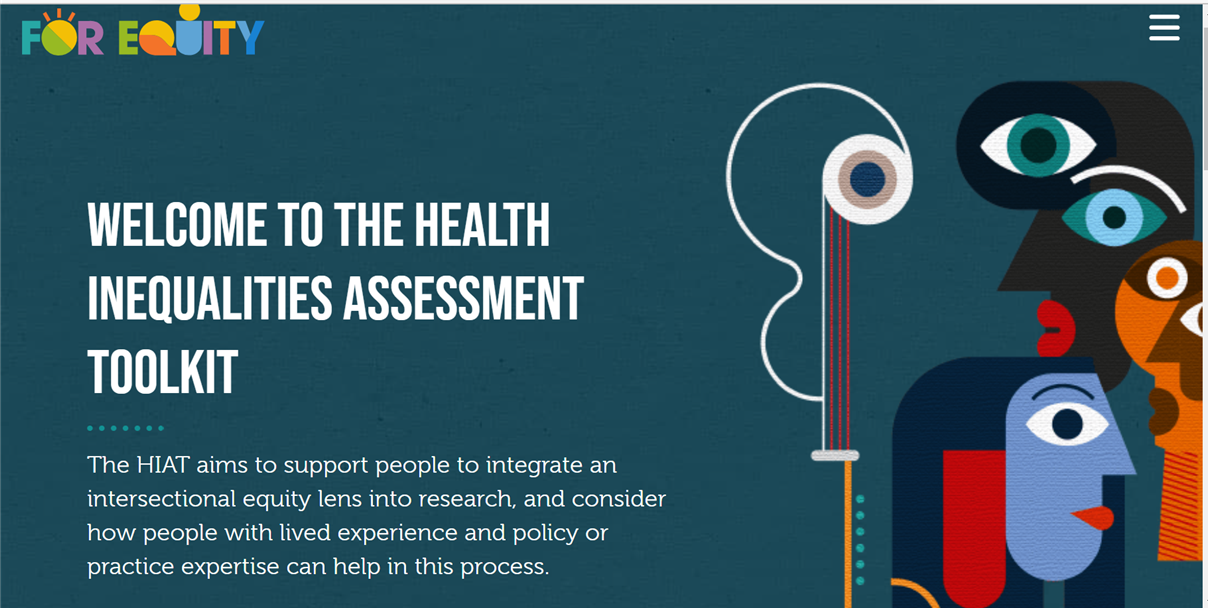Action to reduce inequalities – applying an equity lens to research and evaluation
written by Jane Cloke

People living in more deprived areas have a shorter healthy life expectancy; not only do people die younger, their health is also poorer. The team behind the applied research collaboration for the north west coast, we believe that collaboration is the key to tackling these health inequalities, developing a common understanding of the upstream causes of HI and bringing in the voice of people living with inequalities. As an ARC, we work together to be systematic about addressing health inequalities, researching the best ways to design and implement services helping to narrow the gap in healthy life expectancy.
During CLAHRC, we developed a health inequalities assessment toolkit – the HIAT – for researchers, because there wasn’t one. We developed it with the school for public health research and it has been further developed, extended and included in ForEquity, which is a web-based curation of tools and resources to help make research evidence more relevant for action to reduce social and health inequalities
The HIAT aims to support people to integrate an equity lens into research, and consider how people with lived experience and policy or practice expertise can help in this process. With Lucy Melville, we explored how the HIAT (as a boundary object) transitioned from an ‘in-theory’ set of questions to an ‘in-use’ tool focusing an equity lens on our research. At the time that we did this piece of work, the tool had 4 sections with an emphasis on social inequalities – since then the lens has been developed to include other dimensions of inequity. Reflecting on how the toolkit is used in practice has given us the opportunity to explore its ‘action-derived’ properties, helping to strengthen our understanding of how and why the toolkit can be useful in mobilising knowledge.
The HIAT’s power lies in its ability to surface shared concerns and goals, bringing together stakeholders’ viewpoints, representing a convergence of their values and needs. We saw that HIAT resonated with stakeholders on an emotional level, generating allegiance as they worked together to ask how they can collaborate to reduce the burden of health inequalities within their communities. HIAT is meaningful to research stakeholders, acting as a catalyst for conversation around how health inequalities is everyone’s business, from those who commission it, conduct it, participate in it, and contribute to it. Together these features instilled an authenticity upon the HIAT, enabling its transition from something that appeared as an (boundary) object on paper or on a screen, to something which came alive in the hands of users. More details on our exploration of putting the HIAT into practice can be found in Hassan et al 2023.
In terms of impact, with the teams that we have supported to use the HIAT, we have witnessed more confident use of evidence to transform local services to improve outcomes for all. We have evidence to show that HIAT is being used outside our region and internationally. Training is delivered routinely to create additional capacity, for example students and early career researchers.
Collaborative links have been facilitated between researchers, practitioners and people with lived experience, and in particular, people with lived experience value the structure the HIAT brings to contributing their knowledge to the research. And finally, because it’s a tool that can only be done meaningfully with all the relevant people in the room, HIAT can be seen as an enabler of co-production, bringing scientific, technical and experiences together to inform research and evaluation.